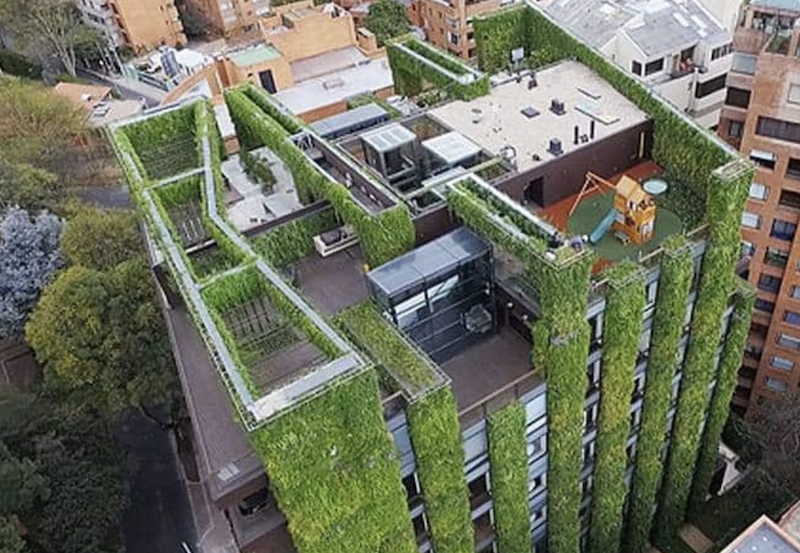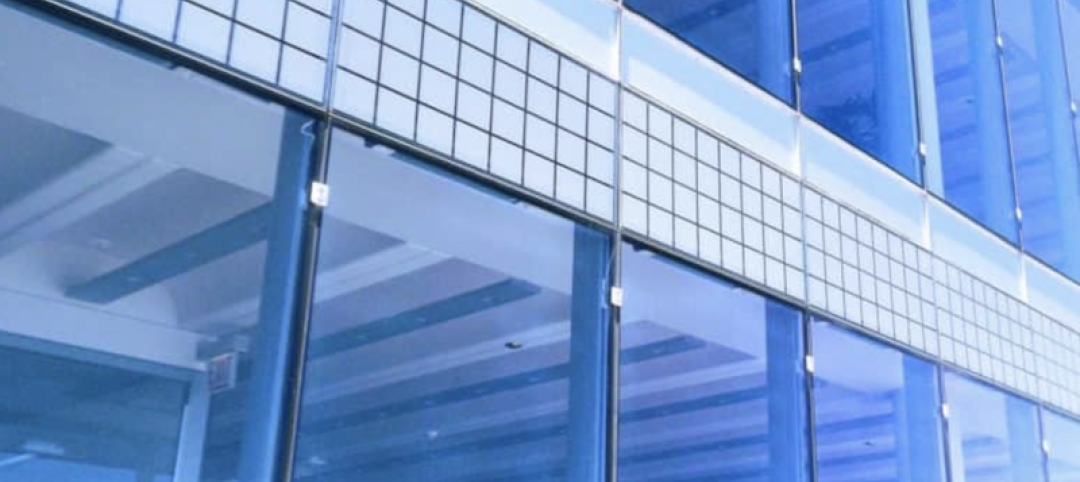Experts in the emerging field of biophilic design are finding that that people need regular contact with nature to be happy and whole. For those who live and work in cities, the concrete, glass towers, smog, and noise can drastically and negatively affect wellbeing. Urban areas are projected to house 60 percent of people globally by 2030, and one in three people will live in cities with at least a half million inhabitants.
So here’s the question and our opportunity: When there’s only so much real estate available in urban centers for parks, how’s a developer to bring in more green with biophilic design?
Build up. Marry buildings and nature with vertical gardens
Building designers are responding to the biophilic design call to action by creating vertical gardens. Also called living walls or green walls, vertical gardens are self-contained gardens installed on the sides of buildings to provide expanses of greenery in urban areas. Vertical gardens can be attached to virtually any vertical structure, and they can be used as free-standing space dividers, providing beauty, sound-proofing, and security. Plants can also be used to reduce noise along roads and highways. Living green walls block high-frequency sounds while the supporting structure can help diminish low frequency noise.
Here are a few of our favorite examples:
 Santalaia, a multifamily residential building in Bogota, Colombia.
Santalaia, a multifamily residential building in Bogota, Colombia.Vertical gardens are good for the community’s health
Prospective tenants – be they multifamily or commercial – love vertical gardens, which makes them a win/win for developers and building users.
Vertical gardens provide refreshing visual breaks from concentrations of concrete and steel, and their benefits go far deeper. Vertical gardens have a profound impact on air quality, especially in mitigating humidity and controlling dust indoors and outdoors. Green walls absorb noise pollution and create micro-climates that build heat efficiency. They have the added benefit of creating urban ecosystems that attract insects and birds, positively affecting biodiversity. In some cases, vertical gardens contribute to a larger ecosystem. In fact, vertical gardens take on more of a regenerative design philosophy from a C02 design standpoint. Plants are natural filters – taking carbon dioxide from the air and replacing it with much needed oxygen. They also help to filter pollutants from the air, literally helping urban dwellers breathe easier.
According to Hanging Gardens, a New Zealand vertical garden designer, the Auckland Council estimated the social cost from air pollution in the city to be $1.07 billion. Further, studies show that in city streets bounded by buildings, careful placement of plants reduced concentrations of nitrogen dioxide by up to 40 percent and of microscopic particulate matter by up to 60 percent. These statistics can be powerfully persuasive during design review meetings and entitlements processes.
Then there are the psychological benefits. The cumulative body of evidence from more than a decade of research on the people-nature relationship proves that contact with vegetation is highly beneficial to human health and well being. Whether contact with vegetation is active (gardening) or passive (viewing vegetation through a window), results show a consistent pattern of positive effects including:
- Psychological and physiological stress reduction
- More positive moods
- Increased ability to re-focus attention
- Mental restoration and reduced mental fatigue
- Improved performance on cognitive tasks
- Reduced pain perceptions and faster recovery in healthcare settings
Vertical gardens bring operational benefits too. One of the biggest benefits of vertical gardens is their ability to manage water. Vertical gardens make the need for watering very efficient, as the process is managed using a drip irrigation or hydroponic system. Waste water is collected at the bottom of the garden and either drained away or reused.
While vertical gardens have undeniable benefits for developers and building users, they can be challenging to design and maintain if they are not planned and installed properly. It’s critical to bring together the right system, plants, design, and maintenance strategy so that the green wall can serve the project in the long-term. The planning and investment will be worth it.
 This concept for the Mumbai Tower by Odell Architects takes the vertical garden a step further by incorporating a vertical farm.
This concept for the Mumbai Tower by Odell Architects takes the vertical garden a step further by incorporating a vertical farm.
More from Author
Paladino | Jan 10, 2022
The future of regenerative building is performance-based
Why measuring performance results is so critical, but also easier said than done.
Paladino | May 26, 2021
Injecting embodied carbon capability into the integrated design and construction process
Embodied carbon is defined as the carbon footprint of a material, and is expressed in metric tons of CO2e.
Paladino | May 12, 2021
Climate modeling for a resilient business and future
This post explores changes that developers and their teams need to make to their risk and resilience strategies by climate modeling for climate change.
Paladino | Apr 26, 2021
Building performance requirements are coming: Are you ready?
Building Performance Requirements are trending nationwide and are likely coming to a county near you.
Paladino | Feb 8, 2021
Six lessons learned from our first Fitwel Viral Response Module certification
The Fitwel Viral Response Module is one of several frameworks that real estate owners and operators can use to obtain third-party certification for their efforts ensuring their properties are ready for a safer and healthier return to work.
Paladino | Jan 14, 2021
Shift your energy to carbon
Now is the right and necessary time for the commercial real estate industry to shift its environmental strategy from just energy, a carbon contributor, to carbon itself.
Paladino | Nov 13, 2020
5 tips when designing for daylight
Daylight modeling is a tool to examine how daylight interacts with a building, and how that natural light behaves within interior spaces.
Paladino | Jul 16, 2020
COVID readiness: IWBI and USGBC seek to help businesses quantify risk
In an effort to address the risks of COVID-19 at the building scale, USGBC and IWBI have analyzed existing certification guidelines and drafted new, relevant content.
Paladino | Jun 5, 2020
3 strategies to improve the wellness of building systems and gain tenant trust
Three operational issues that must be prioritized for every building in order to achieve tenant trust are air quality/ventilation, relative humidity, and building commissioning.

















